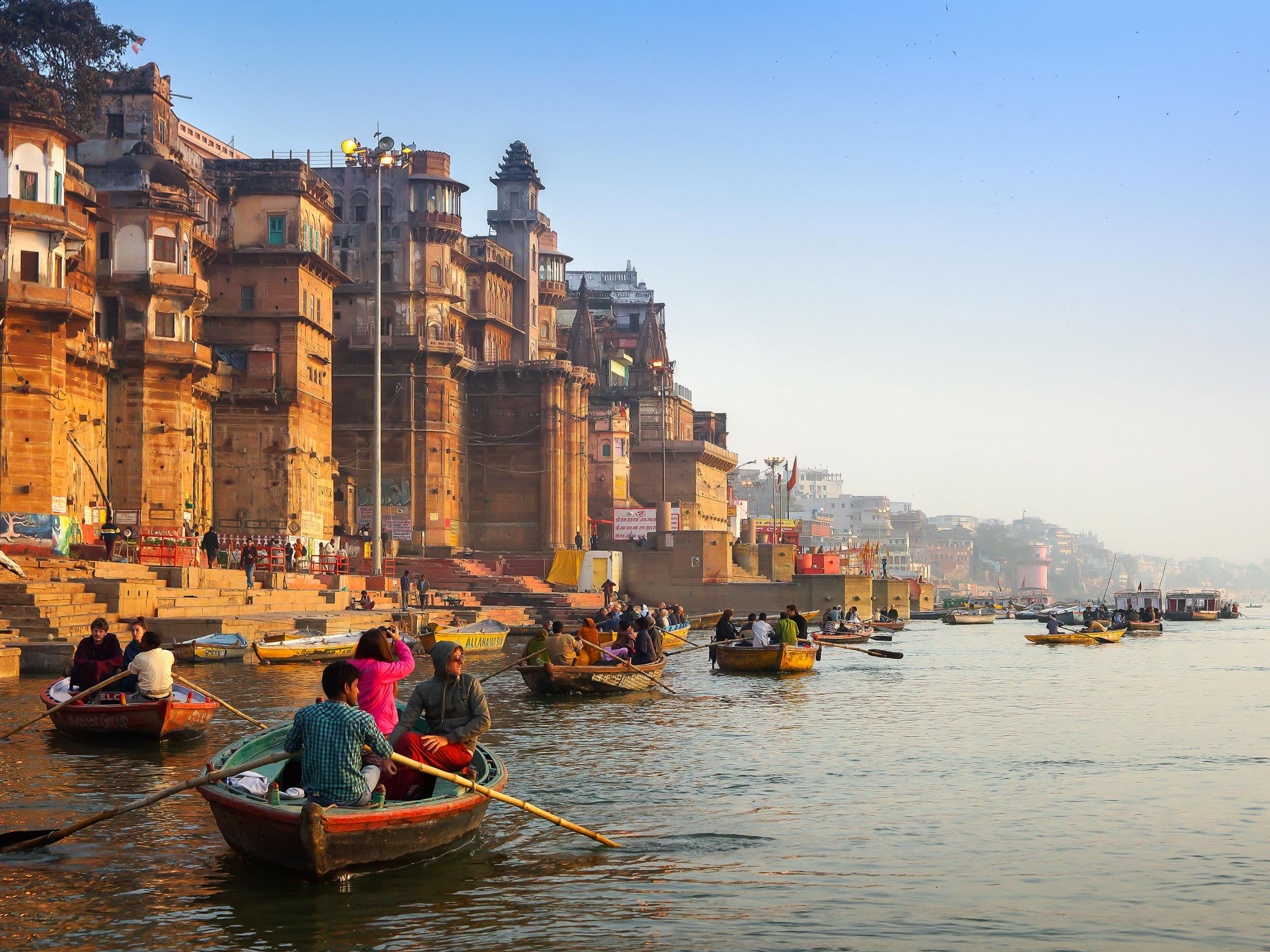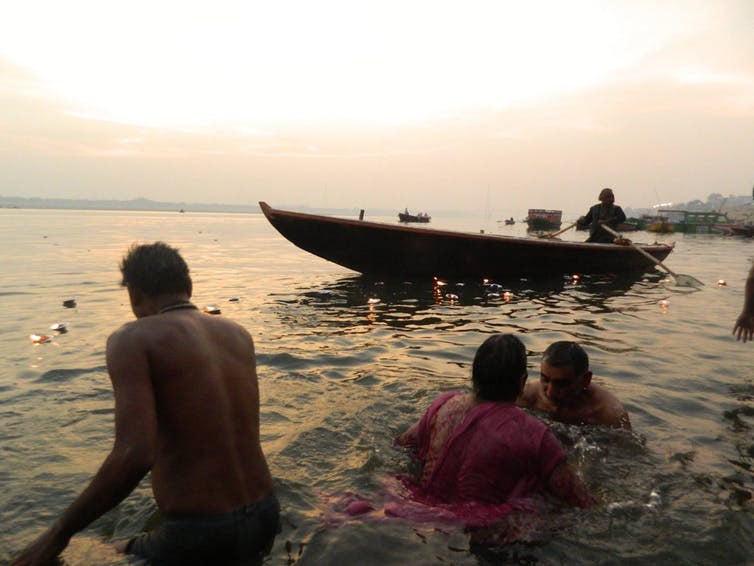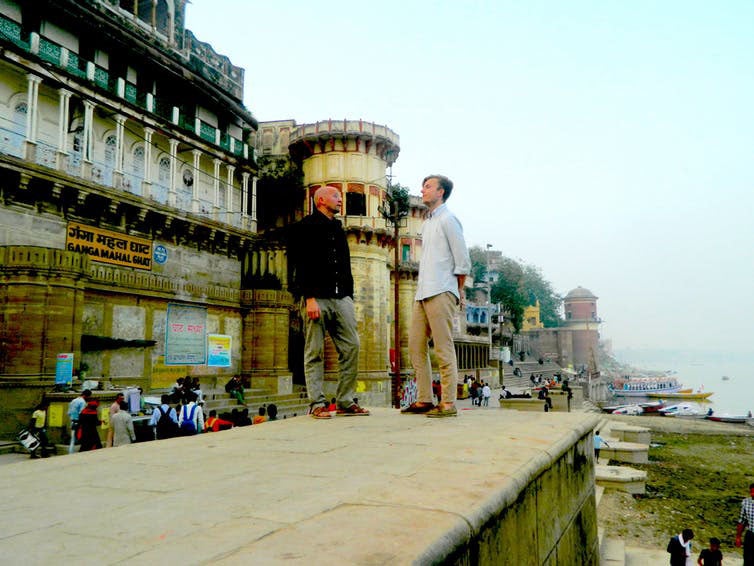India’s holiest city tried ‘pro-poor’ tourism – but for young people, it’s still a survival struggle
Poorer young people in Varanasi have big ambitions, but no way to reach them – despite government efforts

Your support helps us to tell the story
From reproductive rights to climate change to Big Tech, The Independent is on the ground when the story is developing. Whether it's investigating the financials of Elon Musk's pro-Trump PAC or producing our latest documentary, 'The A Word', which shines a light on the American women fighting for reproductive rights, we know how important it is to parse out the facts from the messaging.
At such a critical moment in US history, we need reporters on the ground. Your donation allows us to keep sending journalists to speak to both sides of the story.
The Independent is trusted by Americans across the entire political spectrum. And unlike many other quality news outlets, we choose not to lock Americans out of our reporting and analysis with paywalls. We believe quality journalism should be available to everyone, paid for by those who can afford it.
Your support makes all the difference.Anmol, 17, slips 500 rupees into his pocket as he swaggers down the stairs on bowed legs, after escorting American tourists to the pizzeria in Assi. Anmol reads faces to survive. If a tourist has a good face, he approaches, tests the waters in his broken English, and buys them a chai. “Trust is most important because tourists don’t trust you fast,” explains Anmol.
In Assi, a neighbourhood of bustling cafes and temples in Varanasi – India’s most holy city – most people depend on tourism to make a living: building up that trust allows them to eat. According to the Uttar Pradesh Department of Tourism in 2017, more than 300,000 foreign and 5 million domestic travellers visited Varanasi. During the peak tourist season between October and March, Anmol earns between 2,000 to 7,000 rupees as a guide (that’s £22 to £77). In the low season, he earns little or nothing.
“I also know how to do ceremony,” says Anmol, pulling out his smartphone to show shots of himself waving a lamp in front of a goddess. For a few hours, he helps his father, a priest, at a shrine, earning 50 rupees a day. Now, he has hatched another plan with advice from his Peruvian friend on Facebook – to learn how to play traditional tabla drums, so that he can make a little money teaching tourists keen on Indian culture. If all else fails, he will get a driver’s licence.
Like many others his age, Anmol is struggling to claw his way out of poverty. The average monthly income he cobbles together is just above the World Bank’s poverty line of $1.90 a day. Anmol is trying to acquire valued skills, and he is not among the “abject poor”, nor accounted for in government statistics about poverty. Yet he remains vulnerable, at constant risk of slipping backwards.
When Anmol moved to Varanasi nine years ago from Bihar, his family circumstances were so strained that he had to choose between education and food. The locals have a cautionary saying about Biharis like him: “Ek bihari sau pe bari” – one Bihari is shrewder than hundred local people. Largely disdained by locals for corrupting their culture, most Bihari migrants in Assi work in the informal economy.

When I ask Anmol who benefits from economic development, he replies: “Everybody benefits, but especially the hotel-wallah, restaurant-wallah, boat-wallah.” Those who own prime real estate, or are directly tied to the tourist industry – such as the boatmen who ferry visitors to watch the sunrise – have gained the most. But there has been no systematic effort to document who benefits from tourism, and in what ways.
Across India, tourism accounts for nearly 10 per cent of the GDP, and is the third largest foreign exchange earner. One advantage of the tourism industry is that it can absorb even unskilled workers. The UN World Tourism Organisation has long held that tourism can be a key agent in the fight against poverty. But some experts are more sceptical, arguing that tourism’s value is overstated: it creates menial, seasonal jobs and mainly benefits the skilled elite.

Inclusive “pro-poor” tourism, which creates employment for vulnerable residents, is a priority in the government of Uttar Pradesh’s 2016 tourism policy and India’s 12th five-year plan. Yet there is a lack of clarity around what “pro-poor” tourism should actually achieve. For Avinash Mishra, joint director of Uttar Pradesh Tourism, it means building skills for those in the sector. For others, tourism is only “pro-poor” if it reduces absolute poverty or inequality.
The local government has not thoroughly mapped how much money from tourism goes to the poor in Varanasi, or other areas. Nor has it identified the bottlenecks preventing the poor from earning a greater share, which vary from one destination to another. A “value chain analysis” – which describes the full range of activities required to bring goods or services from conception to completion – could help the government decide whether to invest in skills development or marketing, strengthen local food supply chains or reform local laws.
Research by the Overseas Development Institute, an international development think tank based in the UK, suggests that there are many ways to help spread benefits of tourism. In general, the poor do better when tourists spend on local products, rather than “big ticket” items such as accommodation and tour operators. They also benefit when tourist establishments buy supplies locally, and when they can get jobs where the wages are set relatively high. Enforcing a minimum wage can ensure the benefits are more widespread.
According to Mishra, in Varanasi nearly half of foreign tourists come through package tours, so much of the profit will never reach local communities. Foreigners travelling independently are more helpful to locals. It is hard to regulate private sector development, says Mishra, but government intervention comes with its own issues.

“Once the government comes in, there’s corruption. So we have the principle of the survival of the fittest,” he told me. A family of upper-caste priests, who own much of the local land, are well-equipped for competition. But young people such as Anmol must fend for themselves; if they survive, it’s because of their own ingenuity, resilience and risk-taking.
Many of the young men who came of age in the wake of India’s economic liberalisation now find that the opportunities and lifestyles represented on the internet and television linger just beyond their reach. They are often more educated than their parents, yet they lack the connections and money which could enable them to fulfil their aspirations.
Manini Sheker is a PhD candidate in social anthropology at the University of Sussex. This article first appeared on The Conversation (theconversation.com)
Join our commenting forum
Join thought-provoking conversations, follow other Independent readers and see their replies
Comments